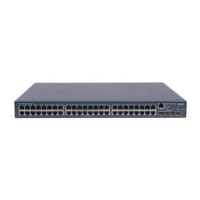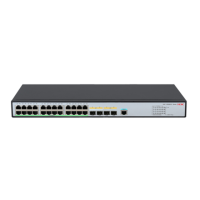2-9
Field Description
RecError_MSG_sum Number of received packets in error
SndMSG_Fail_sum Number of packets that failed to be sent out
Timer_Err Number of timer errors
Alloc_Mem_Err Number of memory errors
State Mismatch Number of errors for mismatching status
Other_Error Number of errors of other types
No-response-acct-stop packet
Number of times that no response was received
for stop-accounting packets
Discarded No-response-acct-stop packet for
buffer overflow
Number of stop-accounting packets that were
buffered but then discarded due to full memory
display stop-accounting-buffer
Syntax
display stop-accounting-buffer { radius-scheme radius-scheme-name | session-id session-id |
time-range start-time stop-time | user-name user-name }
View
Any view
Default Level
2: System level
Parameters
radius-scheme radius-scheme-name: Specifies a RADIUS scheme by its name, which is a string of 1
to 32 characters.
session-id session-id: Specifies a session by its ID. The ID is a string of 1 to 50 characters.
time-range start-time stop-time: Specifies a time range by its start time and end time in the format of
hh:mm:ss-mm/dd/yyyy or hh:mm:ss-yyyy/mm/dd.
user-name user-name: Specifies a user by the username, which is a case-sensitive string of 1 to 80
characters. Whether the user-name argument should include the domain name depends on the setting
by the user-name-format command for the RADIUS scheme.
Description
Use the display stop-accounting-buffer command to display information about the stop-accounting
requests buffered in the device by scheme, session ID, time range, username, or slot.
Note that if receiving no response after sending a stop-accounting request to a RADIUS server, the
device buffers the request and retransmits it. You can use the retry stop-accounting command to set
the number of allowed transmission attempts.
Related commands: reset stop-accounting-buffer, stop-accounting-buffer enable,
user-name-format, retry stop-accounting.

